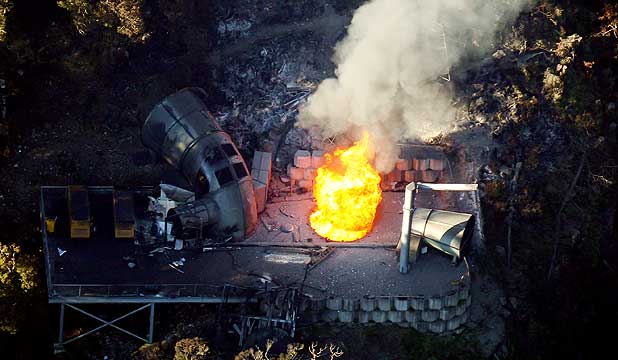Byron Clark The Spark December 2010 – January 2011

There is a famous slogan from a banner carried by striking miners at Waihi in 1912, “If blood be the price of your cursed wealth, good god we have bought it fair”. The slogan brings up images of early twentieth century industrialism; gruelingly hard work in unsafe environments, ruthless exploitation of workers by wealthy capitalists, and accidents abounded. In light of the Pike River mine disaster, the slogan does not seem as anachronistic as it may have prior to November. Indeed, not since 1914 when 43 miners were killed in a mine explosion in Huntly has New Zealand seen a mining disaster of such magnitude. Many have questioned how this disaster could have happened in a developed country, in the year 2010. It’s not the first one however; in April 29 miners died in a gas explosion in West Virginia, USA. The Pike River tragedy has an eerie sense of deja vu for some. Lawyer Davitt McAteer, who is heading an investigation of the USA deaths, was quoted by The New Zealand Herald as saying “You can’t suggest that the mining industry is going forward into the 21st century with the rate that it’s killing people.”
As the dust settles on the West Coast, it is becoming increasingly clear that the pursuit of profit was put ahead of the safety of workers. While Pike River Coal is one of New Zealand’s largest corporations, and valued at $400 million, the company made a $54.1 million loss between July 2006 and June 2010, and was under pressure from its major shareholder, New Zealand Oil & Gas, to improve its performance. The safety standards of the mine have been condemned by experts such as Andrew Watson, the operations manager of United Kingdom Mines Rescue Operations, who told the New Zealand Herald that methane levels had to have reached 5 to 15 percent of the atmosphere for the explosion to occur. In British mines, work stops if methane levels reached just 1.25 percent, and mines are evacuated once they reach 2 percent. Watson stated that “either the warning system was inadequate, or it was not sufficiently monitored”. The most likely cause of the methane build up was a power outage that disabled the mine’s ventilation system; there was no backup generator. Geologist Murray Cave had warned back in 2007 that the geological risks at the mine site included a pit bottom with deep, highly gassy coals and the associated risk of “outburst”, or gas explosions. The Hawera fault zone running through the mine could be an additional source of methane. Continue reading “The West Coast mining tragedy – An international and historical class issue”


